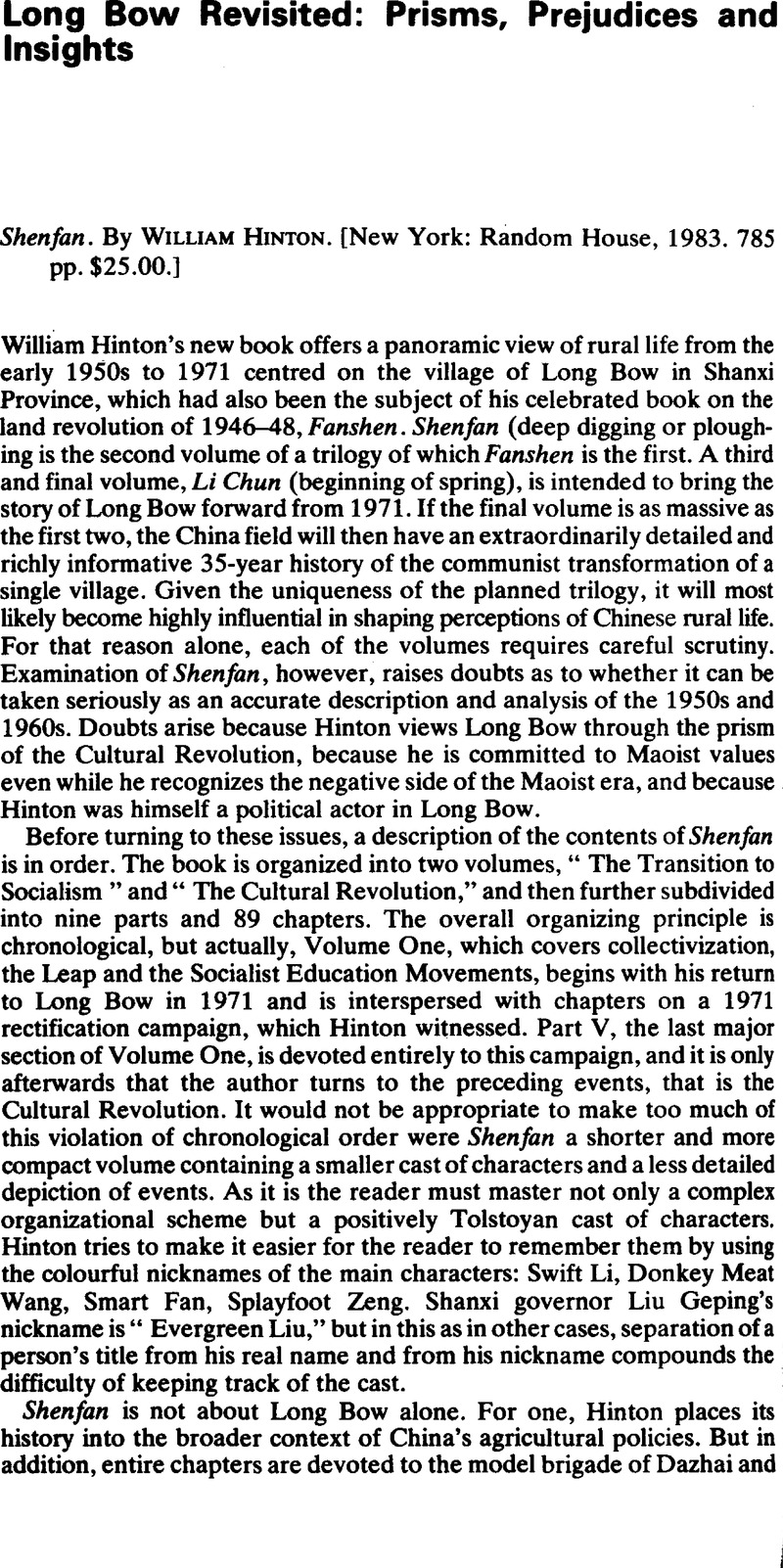No CrossRef data available.
Article contents
Long Bow Revisited: Prisms, Prejudices and Insights
Published online by Cambridge University Press: 17 February 2009
Abstract

- Type
- Review Articles
- Information
- Copyright
- Copyright © The China Quarterly 1984
References
1. These interviews were first published in New China, the journal of the U.S.-China Friendship Association, beginning in the summer of 1977.
2. The current charges against Dazhai extend far beyond exaggeration of output or lying about extensive state aid. Aside from pursuit of ultra-leftist practices, they include the waging of bloody class struggles and the promotion of factionalism in Shanxi province, a joint relevant to this book. For a report by the Shanxi Party Committee on Dazhai, see Xinhua-Beijing, 11 February 1981. Foreign Broadcast Information Service, No. 28 (11 february 1981), L9 et seq.
3. See Hinton, William, “Village in transition,” in Selden, Mark and Lippit, Victor (eds.), The Transition to Socialism in China (Armonk, N.Y.: M. E. Sharpe, Inc., 1982), pp. 112et seqGoogle Scholar. In this chapter Hinton discusses Long Bow in the 1970s.
4. For a careful analysis of both periods, see Zweig, David, “Agrarian radicalism in China, 1968–1977: the search for a social base,” unpublished Ph.D dissertation, University of Michigan, 1983Google Scholar.
5. See Domes, Jurgen, Socialism in the Chinese Countryside (London: C. Hurst and Co., 1980)Google Scholar, particularly pp. 72 et seq. See also Friedman, Edward, “The politics of local models, social transformation and state power struggle in the PRC: Tachai and Teng Hsiaso-p'ing,” The China Quarterly, No. 76 (12 1978), p. 874CrossRefGoogle Scholar, for a reference to the North China Agricultural Conference. Friedman suggests that the Dazhai model was redefined at that time as a model of mechanization rather than simply as a model of collective bootstrap labour.
6. 81% of a sample of Guangdong brigade leaders served more than seven years apiece. See Parish, William L. and Whyte, Martin K., Village and Family in Contemporary China (Chicago: University of Chicago Press, 1978), p. 108Google Scholar.
7. For a discussion of this campaign, see the author's “Keeping the revolution going: problems of village leadership after land reform,” in Lewis, John W. (ed.), Party Leadership (and Revolutionary Power in China (New York: Cambridge University Press, 1970), pp. 257Google Scholaret seq.
8. See Yibo, Bo, “Jiaqiang zai nongcun zhong di zhengzhi gongzuo” (“Strengthen political work in the countryside”), Xuexi, No. 6/7 (1 07 1951), p. 32Google Scholar.
9. “Self-criticism, October 23, 1966,” Collected Works of Liu Shao-ch'i, 1958–1967 (Kowloon, Hong Kong: Union Research Institute, 1968), p. 360Google Scholar.




